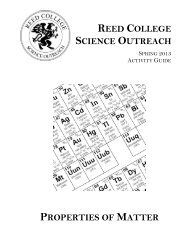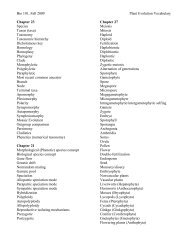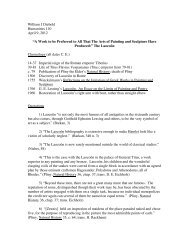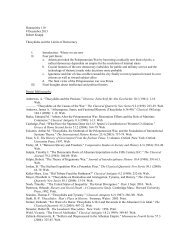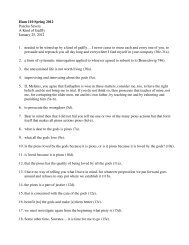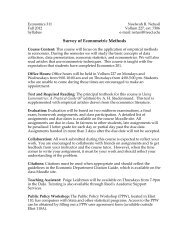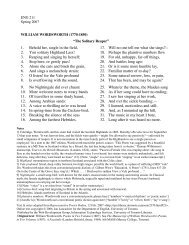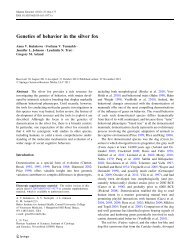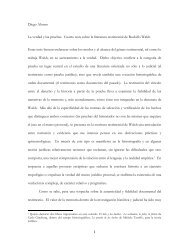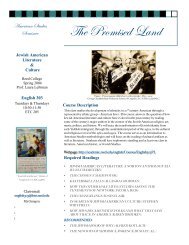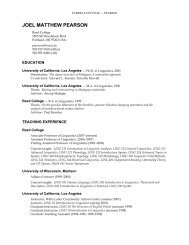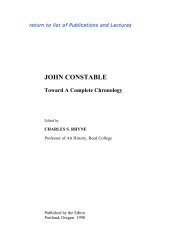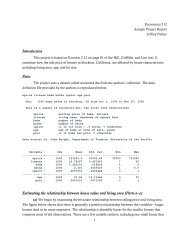Graphic and Photographic Documentation - Reed College
Graphic and Photographic Documentation - Reed College
Graphic and Photographic Documentation - Reed College
Create successful ePaper yourself
Turn your PDF publications into a flip-book with our unique Google optimized e-Paper software.
Antochiw, Michel<br />
Historia cartográfica de la península de Yucatan. Ed. Comunicación y Ediciones Tlacuilo,<br />
S.A. de C.V. Centro Investigación y de Estudios Avanzados del I.P.N., 1994.<br />
Comprehensive study of maps of the Yucatan from 16 th to late 20 th centuries. Oversize<br />
volume, extensively illustrated, including 6 high quality foldout color maps. The<br />
important 1557 Mani map is illustrated <strong>and</strong> described on pages 35-36, showing that<br />
Uxmal was known at the time <strong>and</strong> was the only location identified with a symbol of an<br />
ancient ruin instead of a Christian church.<br />
ARTstor<br />
Available on the ARTstor web through subscription at:<br />
http://www.artstor.org/index.shtml<br />
(accessed 2007 Dec. 8)<br />
This is one of the two most extensive, publically available collections of early<br />
photographs of Uxmal, Kabah, Sayil, <strong>and</strong> Labná, either in print or on the web. The<br />
other equally large collection, also on the web, is hosted by the Peabody Museum of<br />
Archeology <strong>and</strong> Ethnography, Harvard Univsrsity (which see). The photographs on<br />
the ARTstor website are from the Carnegie Institution of Washington Maya<br />
Excavations, <strong>and</strong> are also housed at the Peabody.<br />
Some of the same photographs appear on both web sites. The photographs include<br />
distant views, views of individual buildings, including lesser known structures, interiors,<br />
many details of collapsing sections <strong>and</strong> individual pieces of fallen architectural<br />
sculpture, reliefs, etc. Both sets of photographs show some structures as discovered,<br />
some uncovered, <strong>and</strong> some at various early stages of restoration.<br />
The main differences are that the ARTstor images can be opened larger <strong>and</strong> at higher<br />
resolution, allowing viewers to examine the images in greater detail, a significant<br />
advantage for photographs of these elaborate <strong>and</strong> much restored Maya sites. Also, as<br />
of December 2007, the catalogue information posted with the ARTstor images is much<br />
more extensive than that on the Peabody site. However, ARTstor images are only<br />
available at subscribing institutions in the United States, whereas the Peabody images<br />
can be viewed by anyone with Internet connection anywhere in the world.<br />
The Carnegie Institution of America photographs were taken between 1913 <strong>and</strong> 1957<br />
during the Maya expeditions sponsored by the CIW.<br />
On the ARtstor web site, there are 462 images of Uxmal, 330 of Kabah, 235 of Sayil,<br />
<strong>and</strong> 193 of Labná. The images can be opened full screen-size <strong>and</strong> larger. Most are<br />
magnificent, grey-scale photographs, highly professional <strong>and</strong> superbly lit for maximum<br />
detail <strong>and</strong> legibility.<br />
2



